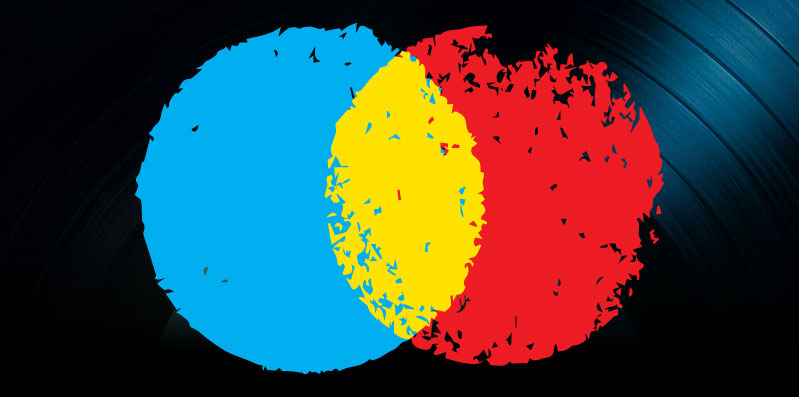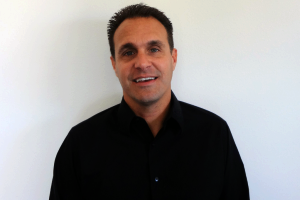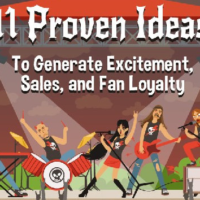
Will Social Media Become Pay to Play?
Gino Sesto is owner and head of media, and Pedram Nikfarjam is an account manager at DASH TWO, Inc., a media-buying agency based in Los Angeles, CA. The company offers creative TV, online, radio, print and outdoor advertising and specializes in the music, fashion and film industries. Gino Sesto has been in the music industry for almost 20 years. After working on marketing at record labels, he developed an interest in negotiating media deals and, after several agency jobs, started DASH TWO. As head of the media department at DASH TWO, Gino refines the science behind the company’s advertising techniques and finds new ways deliver campaigns effectively and efficiently.

Pedram studied business and got his bachelors in science at the University of California, Riverside and joined the DASH TWO team in August, 2012. After graduating, he opened his own business which he still continues to manage on the side while making sure DASH TWO’s online campaigns run smoothly and that advertising campaign objectives are met.

In late 2011, I interviewed Gino for the Musician Coaching site, and he shared some information about opportunities for artists in online advertising. Since social media and online advertising has been changing so rapidly in recent months, I figured it was a good time to reconnect with him and Pedram about which types of advertising and platforms are working most efficiently for artists in the current digital climate. They also shared some information about upcoming social media trends and where platforms like Facebook, Twitter, YouTube, Google+ and many more could be headed with advertising resources for musicians in the near future.
Musician Coaching:
Thanks so much for taking the time to talk, Gino and Pedram. Gino, I interviewed you a couple years back, and you shared some thoughts about Online Advertising for Musicians. I’ve noticed lately that everything is changing rapidly with social media, especially on Facebook. For example, the algorithm that figures out how to serve people ordinary posts from their friends seems to be getting more and more competitive with people who are paying for advertising. How is this shift affecting your own business and the business of getting people to hear artists’ music?
GS:
As these social media platforms get exponentially larger, there’s more and more noise out there. I think Facebook realizes that, and that this is an opportunity to earn revenue. The new algorithm that just came out a few weeks ago makes it so that unless you’re paying, it’ll be a lot harder for your organic posts to get in front of people.
Musician Coaching:
Do you think this new model is going to be sustainable for Facebook?
GS:
There is a Princeton study that just came out about Facebook, saying that Facebook will lose about 80% of its user base by 2017, which is quite a controversial statement. There’s also this other Facebook study that said what has killed social media, historically, is when a platform has become too big to sustain itself. Facebook is looking for different ways to generate their ad revenue while keeping their audience engaged and involved in the platform. The decrease in number of organic posts on people’s newsfeed might actually push people away- after all, what else do you use Facebook for but to keep in touch with friends? So, while the new model is definitely great for Facebook’s business model, it could greatly affect the amount of active users they have.
Musician Coaching:
It seems like social media advertising on Facebook is considerably more expensive than on other platforms. Is this true?
GS:
Correct. Also, organic posts are becoming harder for businesses and brands to get through the clutter. Facebook has gotten more and more efficient from the standpoint of advertising. The mobile and promoted posts have become very efficient, and they might be burying some of the organic posts. After all, there are only so many online clicks in a day. If the promoted posts do well, they will push away everything organic since Facebook wants to limit the amount of clutter, and businesses will have to bid higher against one another to have their posts show up on people’s newsfeeds. And at the end of the day, like any other company, Facebook is in the business of making money, not promoting people’s brands for free.
Musician Coaching:
Well, of course not, though the company certainly built itself on giving people free promotion and allowing them to share information and communicate with each other for free, but now that it has grown, it needs to be a business. It makes sense, but it doesn’t necessarily always make users happy.
In your experience, is there a certain type of content that gives people a better chance of being found organically?
GS:
Pictures and videos often do really well. Both types of content are worth a thousand words. Also, I’ve found that check-ins at places with pictures show up more frequently than other types of posts. If I just check in, no one cares … but if I check in with an accompanying photo, people will stop to look. Images are becoming very important to social media. The same thing applies to Twitter. If you just tweet text, it doesn’t get noticed as often as if you include a photo. There’s a reason sites like Instagram, Tumblr and Pinterest have grown so much.
Musician Coaching:
It seems like social media in general seems to be getting more and more visually based. I think that’s probably why we’re seeing sites like Tumblr, Instagram and Pinterest grow in popularity. In terms of video, it also seems like we’re moving towards shorter video clips.
GS:
It makes sense, right? As social media becomes more cluttered, no one has time to read. Now it feels like 140 characters are almost too much.
Musician Coaching:
I know your company works with far more than just buying ads on Facebook, but I think the new algorithm is something that is confusing and frustrating a lot of artists as they try to market themselves via social media. Are you seeing any particular social media advertising spends work better for musicians than others, particularly for those on a shoestring budget?
GS:
Facebook is still the 800-pound gorilla in the room, and that hasn’t really changed much. It still remains the most efficient Social Media outlet for bands and artists. However, who is to say that Facebook is not going to disappear in a couple years like Myspace did? When you spend on advertising, you’re investing in Facebook as a company, and that would make me a little bit fearful as an artist on a tight budget. Someone like Bruno Mars is reaping the rewards from the money he spends on Facebook. But the baby band that doesn’t have any sort of following might be a little bit warier.
Two years ago, I would’ve told a band to have a Facebook page before setting up a website. I still would pretty much give the same advice, but I’d add that the band should also have a Twitter page, an Instagram page, Soundcloud, and a YouTube channel, then create a website and link all those social media properties together. Today, bands’ websites are essentially designed to send visitors off to the different social media sites.
On another note, YouTube is really the big thing right now for music. It’s where Facebook was a couple years ago. Artists are realizing they need to build up a YouTube presence in order to get their music heard.
Musician Coaching:
And Pedram, are you finding that advertising for clients on Facebook is more successful than it used to be, with pre-roll and those types of promotional videos?
PN:
We’re doing more and more with YouTube TrueView video ads. It’s different than pre-roll in that you pay people to watch your video. It can be a commercial or a full-length video. After 30 seconds, you get charged. So, if they only watch the first 29 seconds, they don’t pay. But if your video is you will get charged only 29-seconds long, then. It runs like a pre-roll ad on YouTube, but has the “skip ad” feature you see.
TrueView also shows up in Internet searches. So, for example, if someone is searching for information about the band The Cringe and searches for “The Cringe band members,” we can but The Cringe video at the top with a short description and have the video available to view.
The whole point of TrueView is to build your online YouTube channel résumé. You throw your videos out there to get more views and more subscribers. Pre-roll is different, because it is designed to direct people to a point of purchase on iTunes, etc. TrueView helps bands get their name out there and build a fan base.
Musician Coaching:
So many people don’t go through the clearance process required to legally put up cover songs on YouTube. Do you help people promote cover songs using TrueView, too?
GS:
The content you’re presenting through TrueView is content that is already on YouTube, so yes. Clearance is not a problem, because what we’re using is a YouTube video or commercial that is already there. We are only paying when people choose to watch the full commercial.
Musician Coaching:
What percentage of people who click on the TrueView video usually watch to the end?
GS:
10-20% of people will watch the entire video. The YouTube platform is all about exploring, and we’re just helping them do that more painlessly.
On a Google-related note, a lot of the bloggers out there are pointing out that this might be the year for Google+.
Musician Coaching:
I have a lot of my clients on there, and I do find it valuable for giving them better search results and for giving them a way to reinforce content that is on their YouTube channel, but I have yet to find it really move the needle for the majority of artists. There is a handful of people that have really done well on that platform. Interestingly enough, many of these people have not necessarily done as well on other platforms.
GS:
Well, and the thing is, you kind of have to try everything now. If you’re a brand of any kind, you need to have a Google+ presence to help you with search. And that platform is linked to YouTube now, too. You actually have to have a Google+ account to review a video on YouTube. Another thing to remember is that there is no advertising on Google+.
Musician Coaching:
So, in your opinion, what are some other reasons you should maintain an active presence on Google+, even though there is no advertising?
GS:
Right now, there’s just a feeling in the Social Media Advertising community that Google+ is really going to take it to the next level. It is important for search engine results and also YouTube.
PN:
When you’re promoting your music online, you also don’t want to exclude anyone from your target audience. You want to reach both people who are on Facebook and people who are not on Facebook. Google+ could help more people easily connect with bands and brands.
Musician Coaching:
Do you think there are advertising opportunities for Tumblr? I see a lot of people rallying around that right now.
GS:
Tumblr and Flickr are still pretty much ad free, except when you get into the major brands. There are some remnant ad opportunities. I think there will be social media ad opportunities for these platforms, but they just need to open the gates. The challenge is whether or not they will be able to come up with a solution that is as seamless and easy-to-use as Facebook, but not as intrusive.
You didn’t ask about Twitter, but I personally feel Twitter’s issue right now is that they haven’t found the right advertising strategy yet. They’ve experimented with some different types of ads: “Promote a Tweet”; “Promote a Page”; “Promote an Account”; “Promote a Trend.” So far, “Promote a Tweet” has been the only option that has been affordable across the board on Twitter and has offered measurable results. An artist like Bruno Mars, to use him as an example, will automatically have a following on Twitter, so he won’t need to really use ads to build his audience there. There are more reasons to promote individual tweets he posts than there are to promote his whole account.
Musician Coaching:
You’ve offered up an overview of online spends. But what if you’re a grassroots, aspiring artist? I know it’s difficult to speak in generalities, but how much money would you recommend an artist like that spend on advertising, and where should they spend it?
GS:
Facebook is still base camp. Money spent is a sliding scale. It really depends on what the artist is trying to achieve; a campaign to promote a Facebook page will have different goals and budgets compared to one promoting an album release. DASH TWO will work with any budget, however.
Musician Coaching:
Could you give me give an overview of the different platforms and what advertising opportunities there are for artists and brands?
GS:
On Facebook, to reiterate, advertising is established, though there is still some experimentation going on with different pieces.
Twitter still has a way to go and will need to come up with new advertising platforms in order to find one that is a good fit for artists. The site is somewhat limited in what it can do.
Pinterest, Instagram, Google+ and Flickr are not in the advertising space yet. Instagram and Pinterest are in beta… I still think Google+ is going to be the key to a bigger opportunity for companies and artists going forward
In my opinion, YouTube is definitely the sweet spot for advertising right now, and with that comes Google+, which could possibly open up in the next year.
There are more platforms to come, of course. Another big thing is SoundCloud, but that site is not really ready for ads yet.
Musician Coaching:
I read something the other day that said something to the effect of, “Social media is eventually going to become purely pay to play.” It seems possible, given the example Facebook is providing.
GS:
There was also an article that came out a couple weeks ago about how social media is “the great equalizer”; it basically claimed that you and your little band have the same potential as Bruno Mars. That’s just not true. The truth is that 99% of the users are following one percent of the artists, and these artists are all the big names.
And the average Twitter user has one follower, and that’s not counting the bot accounts. That just refers to the accounts that have had a tweet in the last 30 days. The stat said that approximately .01% of the users have 99% of the followers. And these brands that have all the followers are Pepsi, Coke, Bruno Mars, Lady Gaga … not people like you and me. And if smaller people had a lot of followers, it would probably look from the outside like we paid for all of them.
I think the biggest mistake a brand or band could make is to just buy followers and fans on social media sites like Google+ and Twitter and then not focus on building a real following. That will catch up to you. But at the same time, you have to start somewhere, and you don’t exist online until others see that people are paying attention to you.
To learn more about Gino Sesto, Pedram Nikfarjam and the work they do with artists and online advertising, visit the DASH TWO website.






